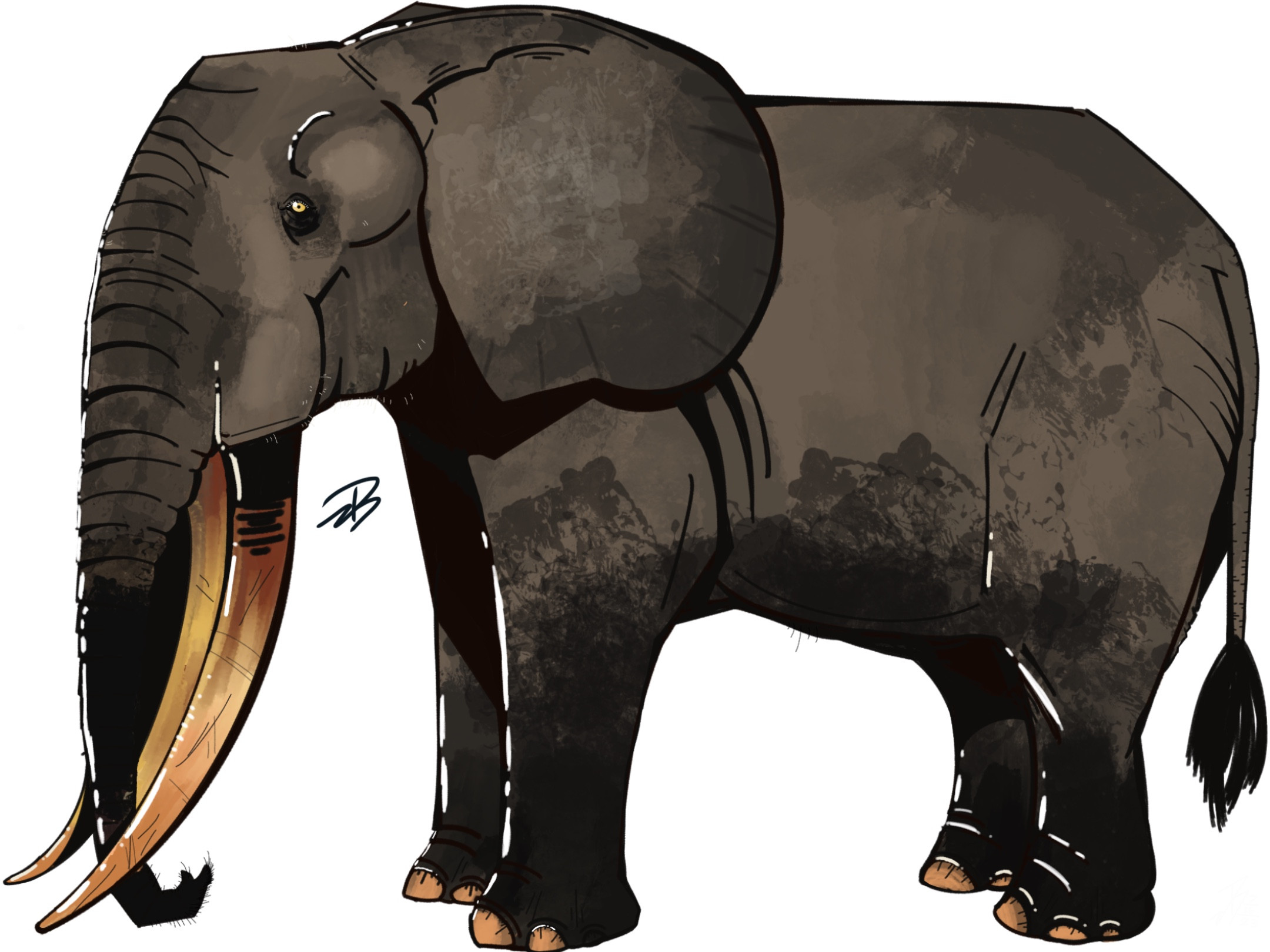HOME | DD
 Astrapionte — African Forest Elephant (Profile)
Astrapionte — African Forest Elephant (Profile)

Published: 2023-07-17 01:16:04 +0000 UTC; Views: 1715; Favourites: 40; Downloads: 1
Redirect to original
Description
𝐀𝐟𝐫𝐢𝐜𝐚𝐧 𝐅𝐨𝐫𝐞𝐬𝐭 𝐄𝐥𝐞𝐩𝐡𝐚𝐧𝐭 (Loxodonta cyclotis), the smallest living species of elephant, native to the dense tropical forests of Central Africa - Democratic Republic of the Congo, Gabon , and Ghana.Females, calves, and teenagers live in matriarchal groups, usually led by an older head-female, while sexually mature males either roam solo or join small bachelor groups. The herds mostly only congregate around salt and mineral licks, where hundreds of elephants dig into the ground via their downward pointing tusks, stick their trunks in the ground, blow air in, and consume the sodium-rich soil for essential minerals in their diet - which is comprised of more than 70 types of plants and fruits.
Forest elephants literally shape the world around them… through their poop. Through their poop, the seeds of the plants they eat are dispersed all over the forest, thereby keeping the jungles growing, and keeping the ecosystem healthy.
These critically endangered giants are extremely elusive, and go out of their way to avoid humans due to generations of poaching. Like all elephants, their tusks are highly sought-after to make ivory. Forest elephants’ tusks are even more desirable to ivory carvers because they are harder than other elephants’. Habitat destruction , invasion of habitat by livestock, and hunting for meat are also huge threats the the remaining population. If we lose these beautiful animals, the health of the land of Central Africa depletes… and the Central African region is one of the largest producers of oxygen on Earth.

























